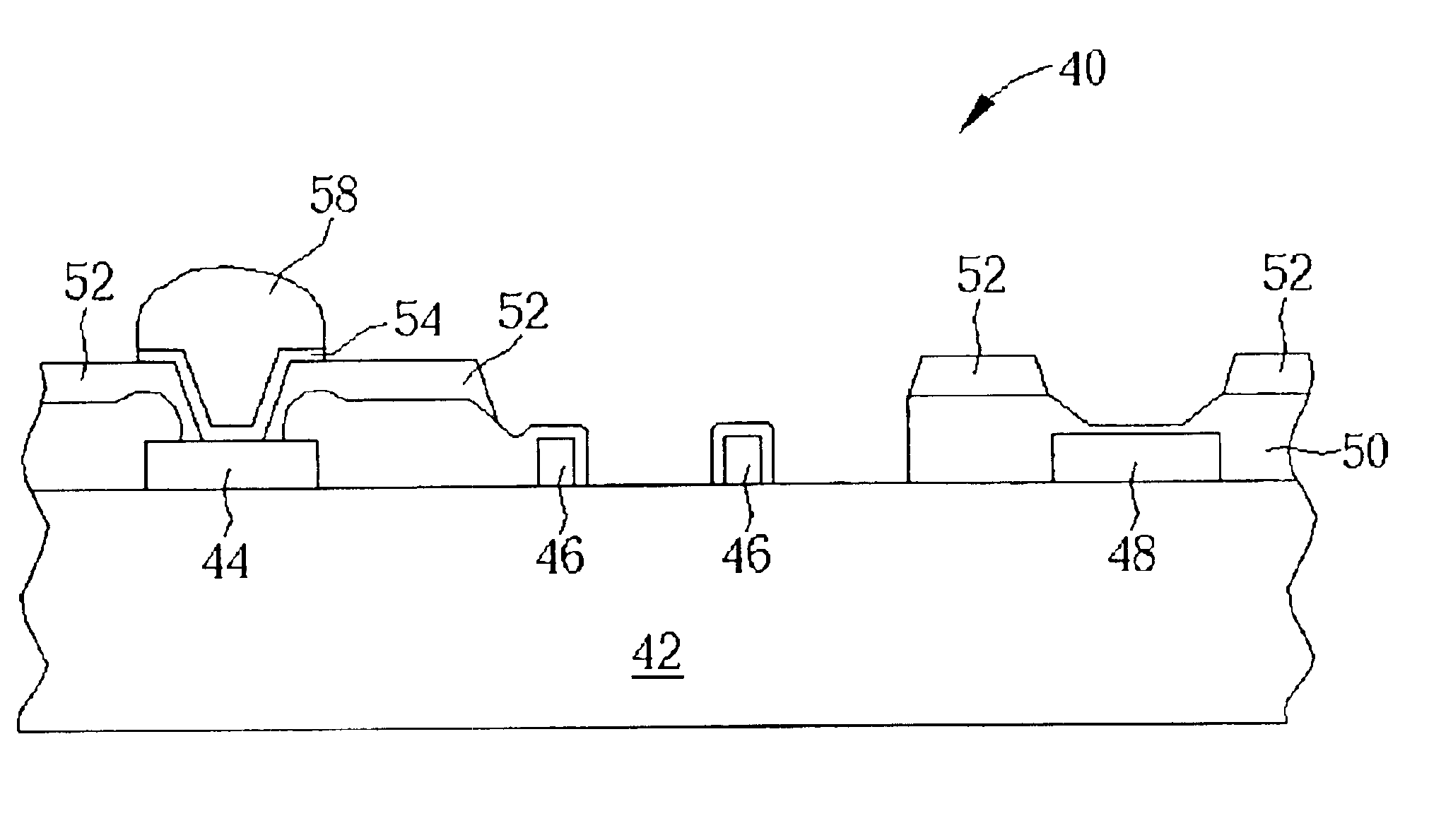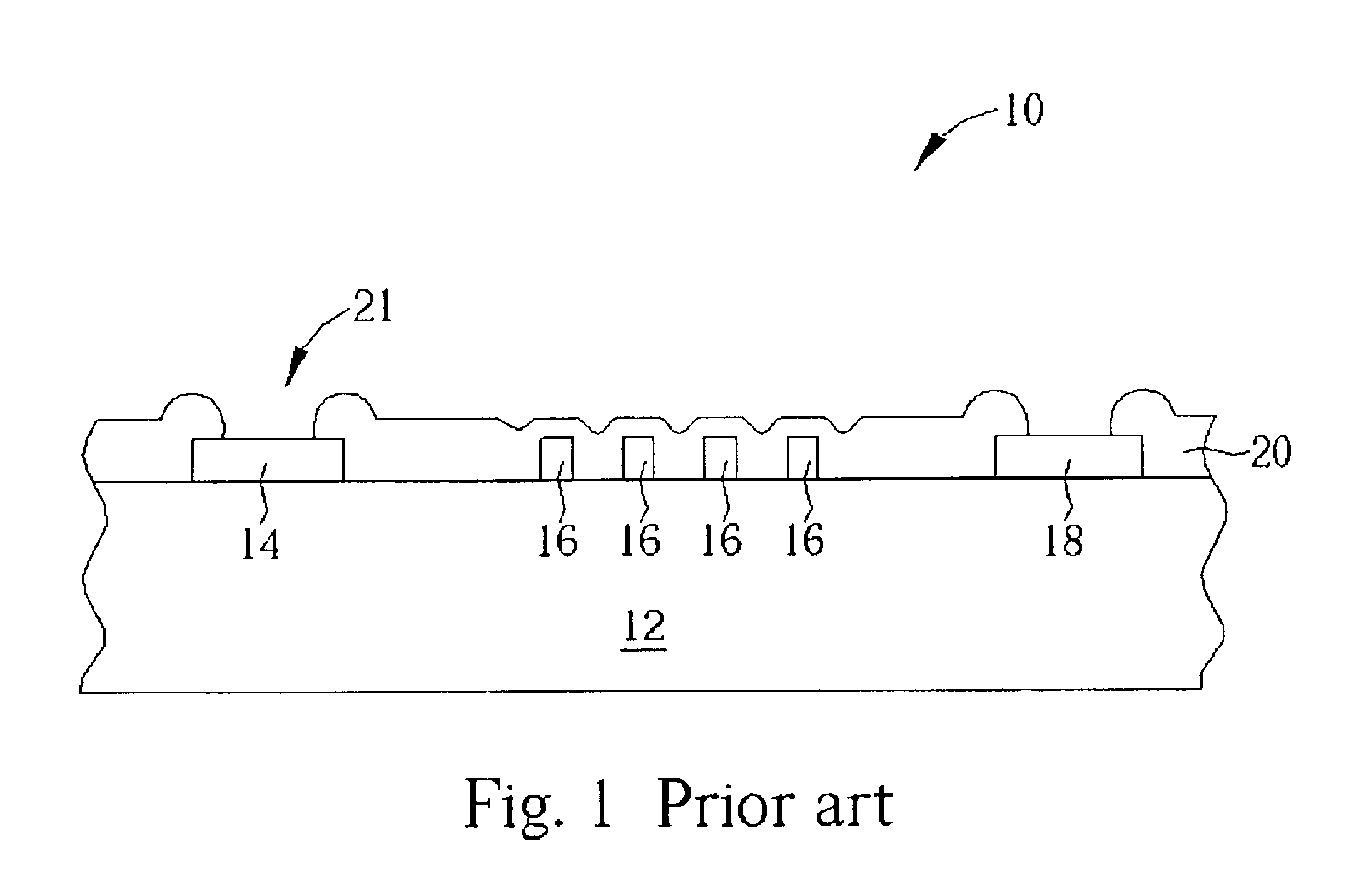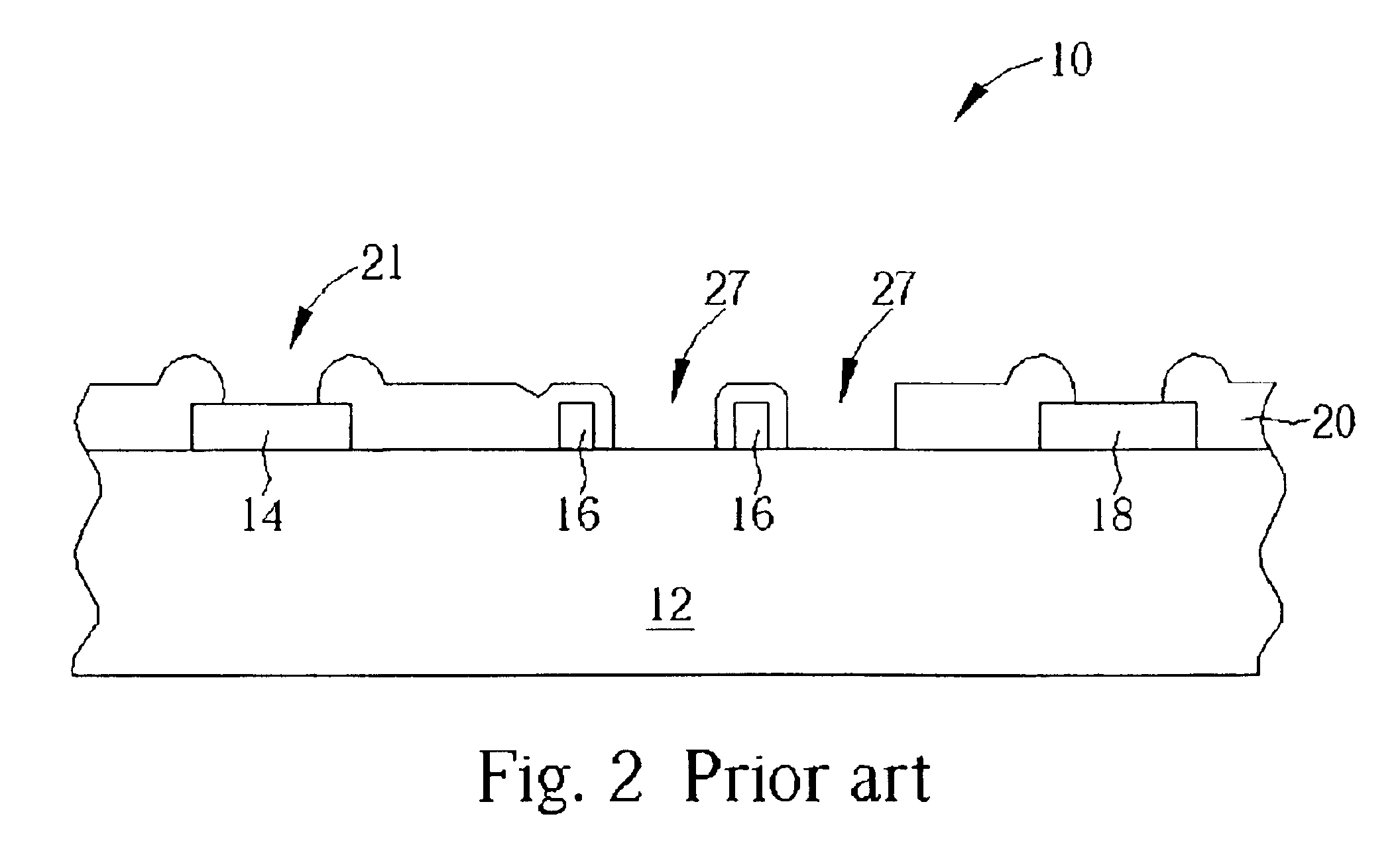Solder bump structure and laser repair process for memory device
a memory device and laser repair technology, applied in the direction of light-sensitive devices, basic electric elements, electrolytic capacitors, etc., can solve the problems of oxidation of the probing mark on the surface of the bump pad b>14/b>, difficult problems, bare copper or crack insulation layers, etc., to prevent the formation of voids
- Summary
- Abstract
- Description
- Claims
- Application Information
AI Technical Summary
Benefits of technology
Problems solved by technology
Method used
Image
Examples
Embodiment Construction
[0017]Please refer to FIG. 5 to FIG. 7 of schematic views of forming a solder structure and performing a laser repair process for memory device on a semiconductor wafer 40 according to a first embodiment of the present invention. As shown in FIG. 5, the semiconductor wafer 40 comprises a substrate 42, which has an integrated circuit region (not shown) comprising an embedded memory array formed on its surface. The surface of the substrate 42 further comprises a bump pad 44, a plurality of fuses 46, and an alignment key 48, and a silicon oxide layer (not shown) is formed on surfaces of the fuses 46 and the alignment key 48. The bump pad 44 is electrically connected with the integrated circuit region. Therefore, after completing a subsequent packaging process, the integrated circuit is able to electrically connect to an external circuit through the bump pad 44. The fuses 46 are formed on an upper layer of the integrated circuit region and electrically connected with the embedded memory...
PUM
 Login to View More
Login to View More Abstract
Description
Claims
Application Information
 Login to View More
Login to View More - R&D
- Intellectual Property
- Life Sciences
- Materials
- Tech Scout
- Unparalleled Data Quality
- Higher Quality Content
- 60% Fewer Hallucinations
Browse by: Latest US Patents, China's latest patents, Technical Efficacy Thesaurus, Application Domain, Technology Topic, Popular Technical Reports.
© 2025 PatSnap. All rights reserved.Legal|Privacy policy|Modern Slavery Act Transparency Statement|Sitemap|About US| Contact US: help@patsnap.com



